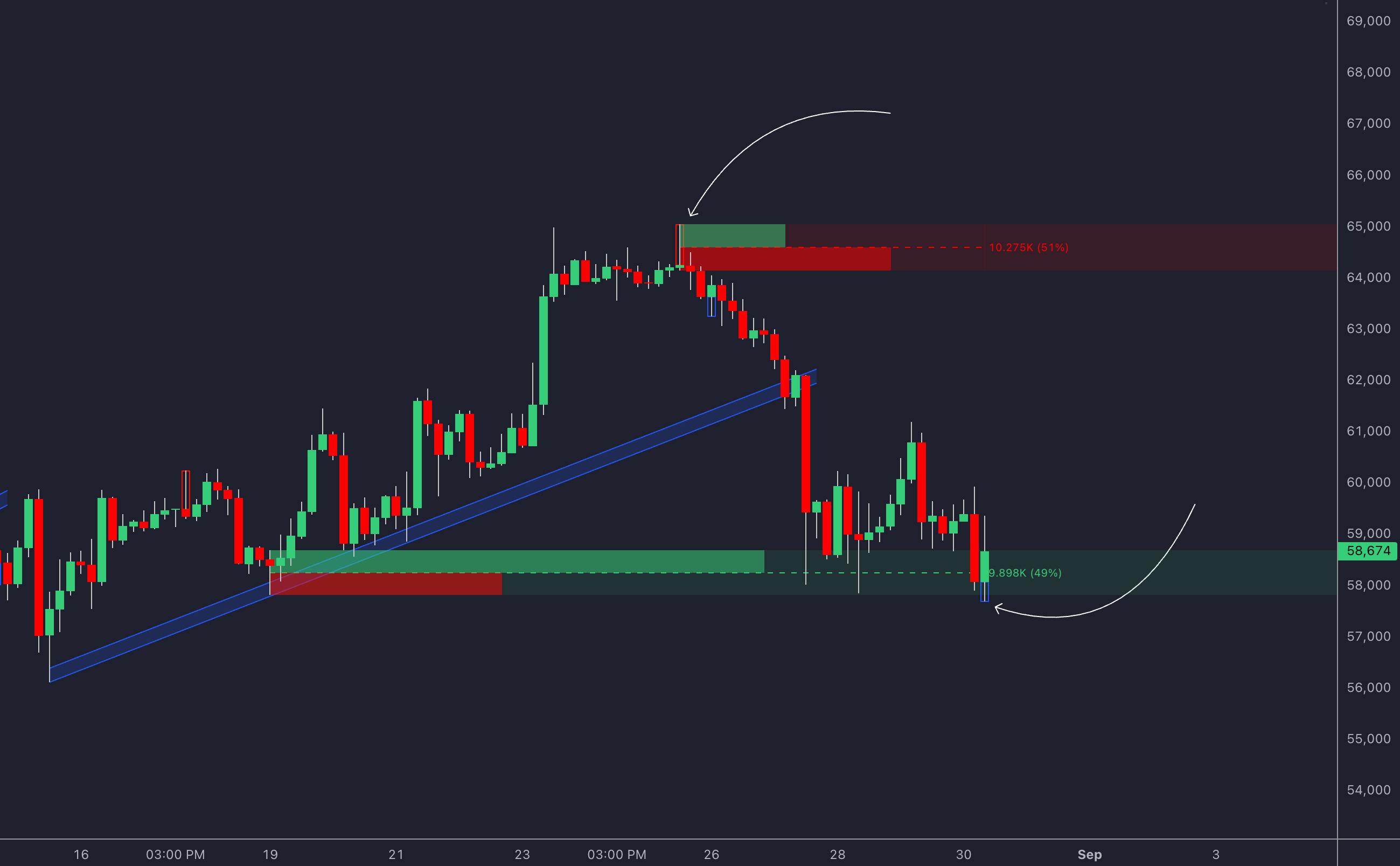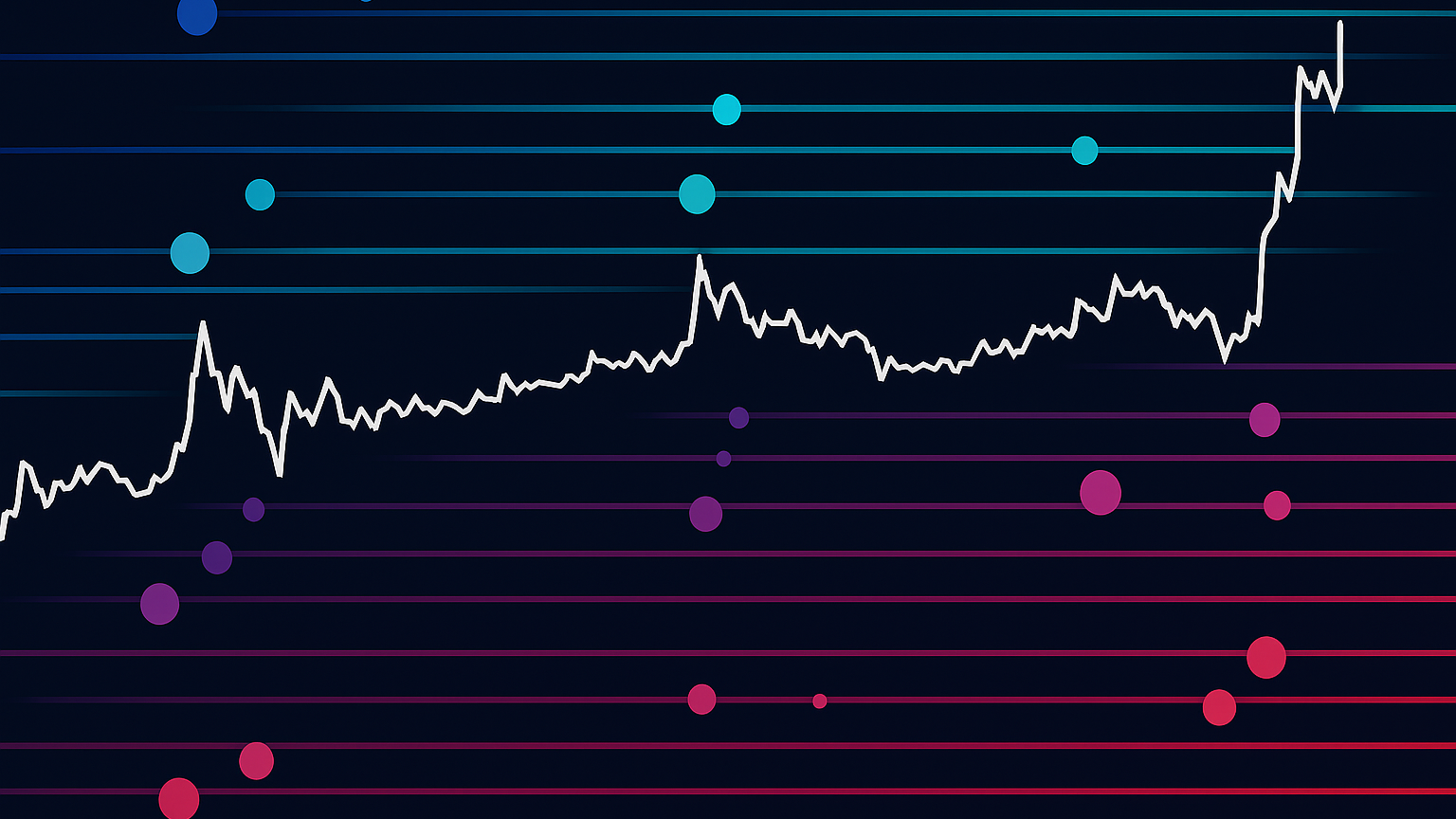Learn how to identify swing highs and lows to enhance your trading strategies and improve market trend analysis.
Swing highs and lows are key price patterns that help traders identify market trends, reversals, and support/resistance levels. They are crucial for spotting potential trade opportunities and improving entry and exit strategies. Here's what you need to know:
- Swing High: A price peak followed by two lower highs, signaling potential resistance or trend reversal.
- Swing Low: A price trough followed by two higher lows, indicating possible support or upward reversal.
- Uses:
- Identify trends (higher highs/lows = uptrend; lower highs/lows = downtrend).
- Plan trades using support/resistance levels.
- Spot potential reversals when swing patterns break.
Pair swing highs and lows with indicators like RSI or moving averages for confirmation. Multi-timeframe analysis and automated features offered by LuxAlgo’s advanced trading indicators and exclusive tools on TradingView can make this process faster and more precise.
Start by practicing on historical charts, refine your strategies with backtesting, and use clear rules to improve your trading outcomes.
Steps to Identify Swing Highs and Lows
Now that you understand the basics of swing highs and lows, let’s dive into how to pinpoint these price patterns in real time.
How to Spot Swing Highs
A swing high happens when a price peak is surrounded by two lower highs, hinting at potential resistance or a trend reversal. Look for an upward price movement that forms a peak, followed by a decline where two consecutive lower highs appear [1]. This pattern can signal a good opportunity to sell or anticipate a shift in the trend.
How to Identify Swing Lows
A swing low is the opposite—it forms when a price trough is surrounded by two higher lows. This often suggests support or a possible trend reversal. Watch for a downward price movement that creates a trough, followed by a rebound with two consecutive higher lows [1]. These setups often indicate potential buying opportunities.
Examples of Swing Highs and Lows
Let’s break it down with examples. After a price breaks a previous high, the lowest point during the retracement becomes the swing low. Similarly, after breaking a previous low, the highest point of the bounce becomes the swing high [1].
To improve your analysis, pair swing patterns with technical tools like Stochastics. These indicators can confirm whether the market is overbought or oversold [2].
Common Mistakes to Avoid
- Confusing small price fluctuations with true swing points
- Overlooking the larger market context
- Relying on swing patterns without confirmation from other indicators [2]
If you want to save time and boost accuracy, advanced features can simplify the process. LuxAlgo offers automated detection and confirmation of swing highs and lows on TradingView, reducing manual errors and improving efficiency.
Using Swing Highs and Lows in Trading
Using Swing Highs and Lows to Analyze Trends
Swing highs and lows are key for understanding market momentum. When you see higher highs and higher lows, it usually indicates an uptrend. On the other hand, lower highs and lower lows point to a downtrend. Recognizing these patterns can help traders anticipate potential price movements with more clarity.
To analyze trends effectively, pay close attention to how consecutive swing points relate to each other. For example, if the price breaks below a key swing low during an uptrend, it could signal a possible trend reversal. Similarly, a break above a significant swing high in a downtrend might suggest a bullish reversal is developing.
Improving Trade Entries and Exits
Using swing points can also improve how you manage trade entries and exits. For long positions, waiting for a swing low to form and confirm can help filter out false signals.
| Trade Aspect | Strategy Using Swing Points |
|---|---|
| Entry Timing | Wait for confirmation after a swing point forms |
| Stop Loss | Place below the recent swing low for longs, above the swing high for shorts |
| Profit Targets | Aim for prior swing highs or lows |
| Position Sizing | Base on the distance between entry and stop loss |
This structured approach helps traders combine swing analysis with other indicators, making entries and exits more precise.
Combining Swing Highs and Lows with Indicators
Swing points are powerful on their own, but pairing them with indicators can sharpen your trading decisions. Tools like the Relative Strength Index (RSI) and moving averages are particularly effective when used alongside swing patterns.
Here are a few ways to combine them:
- Use moving averages to confirm the trend direction indicated by swing highs and lows.
- Apply RSI to check for overbought or oversold conditions near swing points.
- Watch for Stochastic crossovers at critical swing levels.
LuxAlgo provides advanced features to detect and analyze swing patterns on TradingView, helping traders identify setups where multiple technical factors align for higher confidence.
Lastly, swing analysis becomes even more reliable when confirmed across different timeframes. For instance, a swing high on a daily chart carries more weight than one on a 5-minute chart. However, both can be useful depending on your trading style and strategy. Combining swing points with indicators and multi-timeframe analysis can significantly improve decision-making.
sbb-itb-cf0ed88
Advanced Tools and Techniques for Swing High/Low Analysis
Analyzing Swing Highs and Lows Across Timeframes
Multi-timeframe analysis offers a clearer picture of market behavior. Start with higher timeframes to spot the main trends, then shift to lower timeframes for more precise entry and exit decisions. This method reduces the risk of false signals and provides a better understanding of market structure.
| Timeframe | Focus | Application |
|---|---|---|
| Higher (Daily/Weekly) | Spot main trend | Plan broader positions |
| Medium (4H/1H) | Confirm trend | Pinpoint entry/exit zones |
| Lower (15M/5M) | Fine-tune timing | Execute trades effectively |
Manual analysis can work well, but advanced features can make the process faster and more efficient.
Using LuxAlgo Features for Swing Analysis

LuxAlgo offers advanced indicators that can streamline swing analysis, swing point detection, trend analysis, and custom alerts. These features enhance traditional methods by automating pattern recognition and delivering real-time updates on potential trade setups.
Once you've chosen the right features, it's essential to rigorously test and refine your strategies to ensure they deliver consistent results.
Testing and Refining Strategies
To succeed in swing trading, you need to test your strategies thoroughly and keep improving them. Backtesting is key—it allows you to evaluate win rates, fine-tune entry and exit points, and measure performance across different timeframes. Key points to focus on during testing include:
- Sticking to clear, consistent rules
- Avoiding excessive fine-tuning
- Creating strategies that work in various market conditions
- Testing performance across multiple timeframes
Incorporate volume data to validate swing points, as major swings often coincide with high trading activity. This added layer of confirmation strengthens the reliability of your strategies and helps you make more informed trading decisions.
Conclusion
Key Takeaways
Swing highs and lows play a crucial role in understanding market trends and making informed trading decisions. By analyzing these swing points, traders can gain insights into market behavior and improve their strategies.
This approach works across various timeframes, helping traders pinpoint important support and resistance levels that guide their actions.
Steps to Get Started
Here’s how you can begin incorporating swing analysis into your trading:
- Master the basics: Practice spotting patterns in demo trading setups to build confidence.
- Use multiple timeframes: Analyze higher timeframes for spotting trends and lower ones for fine-tuning entry and exit points.
- Leverage smart features: LuxAlgo offers advanced features that assist in automating swing detection and analyzing trends effectively.
Start by recognizing patterns and gradually enhance your strategies with advanced features to improve your trading outcomes.
FAQs
Here are answers to some common questions traders have about swing highs and lows.
What is an example of a swing high and low?
A swing high occurs when the price reaches a peak and then starts to decline, while a swing low happens when the price hits a trough before moving upward. For example, in an uptrend, the price might drop to $50 (swing low), rise to $55 (swing high), and continue forming higher highs and higher lows.
How do swing highs and lows help in spotting market trends?
Swing points are key for identifying trends and potential reversals. By studying the pattern of swing highs and lows, traders can better time their trades and stay aligned with the market's direction. This approach is especially useful when trends are shifting.
What tools can assist in analyzing swing points?
LuxAlgo offers automated features for detecting swing points and analyzing trends, helping traders identify setups efficiently across various timeframes.
What are common mistakes when trading swing points?
One common mistake is acting too early. Swing highs and lows are only confirmed after two consecutive lower highs (for swing highs) or higher lows (for swing lows). Jumping in before this confirmation can result in false signals and poorly timed trades.
How can I get better at identifying swing points?
Start by reviewing historical charts on daily or weekly timeframes, where swings are easier to spot. Once you're comfortable, practice on shorter timeframes and test your skills using a demo trading account.






